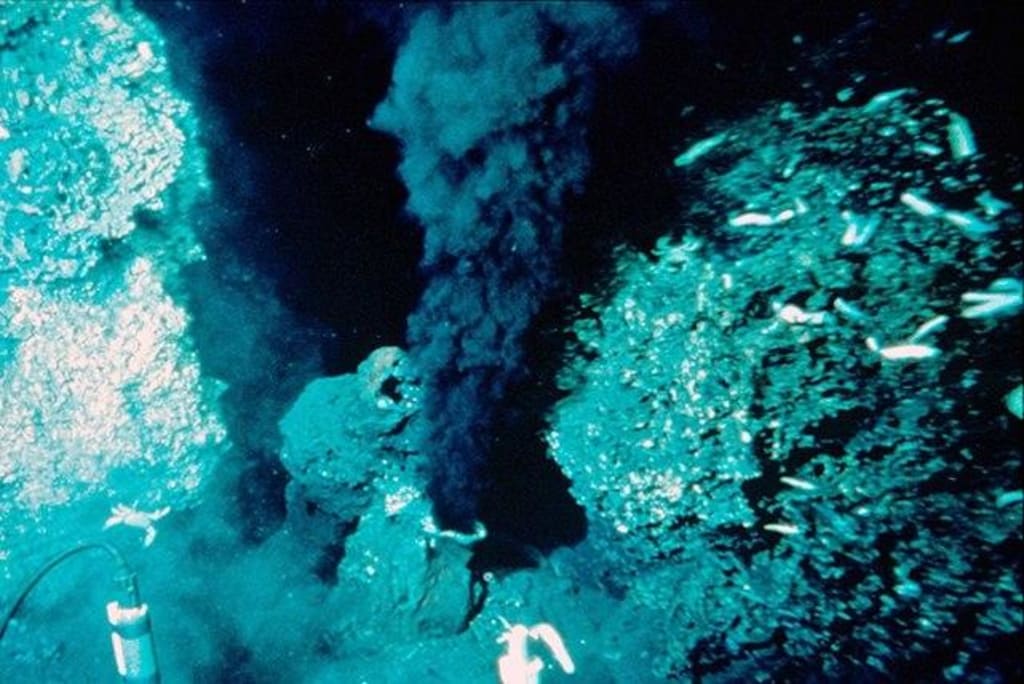Has Mars lost himself? Will the same be true of Earth?
Martian creatures 'destroyed' the Martian environment

Although Mars now looks like a dead star, cold, dry, and without signs of life, the riverbed washed by water from its surface and the highest planetary mountain in the solar system, Mount Olympus ( It is not difficult to find in the volcanic eruption) that Mars was once full of "vigor".
This "vitality" may have given birth to life on Mars long ago, and it is likely that these life have already severely damaged the Martian environment once, so much that it eventually went extinct.
New study: Martian creatures 'destroyed' the Martian environment
About 4 billion years ago, Mars had a very different environment than it is today, rich in carbon dioxide and hydrogen, according to a study published in the journal Nature Astronomy on October 10.
This atmospheric composition created a greenhouse effect, allowing Mars to have a higher temperature at that time, which could support the existence of liquid water; at the same time, according to spectral measurements of rocks exposed on the surface of Mars, the salinity of these liquid waters would have been high at that time, which Meaning water is harder to freeze. Stable liquid water may have given rise to life on Mars as early as 4 billion years ago.
Under this premise, the research team used current state-of-the-art models of the Martian crust, atmosphere and climate, and then brought in ecological models of terrestrial microbial communities that metabolize carbon dioxide and hydrogen, to test the Martian ecosystem.
The team believes that under the relatively habitable conditions of Mars 4 billion years ago, some microbes could have lived underwater to ward off radiation through mud, and these microbes could have appeared anywhere there was liquid water.
They then hypothesized that the microbes adapted to the Martian environment at the time, using the hydrogen and carbon dioxide in the atmosphere to power themselves.
In fact, such microbes can be found in some extreme environments on Earth, such as hydrothermal vents, where they absorb hydrogen and release methane.
The results would be pessimistic if brought in such microbes, which would quickly deplete Mars' hydrogen gas and send Mars into an ice age.
When the early Mars became extremely cold, the surface would not be enough to support life, and creatures had to continue to go deep underground to find a suitable environment for survival.
Over time, these creatures may have gone extinct, but the team noted that both NASA's Curiosity rover and ESA's Mars Express satellites have now detected elevated levels of methane in the Martian atmosphere, which could mean These lives still exist.
Perhaps in the near future, if humans can go deep into the underground of Mars, they can still find these creatures. The team also gave a place where these microorganisms may be found, that is, the Heras Basin, which is left by the impact of asteroids in the ancient times of Mars. A vast depression that was once filled with liquid water.
In general, if life does appear on Mars, then they are unlikely to have a future, and they can easily destroy the planet to the point of being uninhabitable.
So the question is, what about Earth? Why was the earth spared, and wouldn't the creatures of the earth destroy the earth early enough to be uninhabitable?
Before continuing to discuss this issue, we need to know a premise. The team's model is not unfounded. The current environment of the earth is all created by the organisms themselves, and the earth's organisms have also created many major environmental transformations.
Bio-initiated earth-altering movement
Perhaps the most famous of these was the Great Oxidation Event, which occurred about 2.4 billion years ago when oxygen levels in the Earth's atmosphere suddenly soared, turning the entire planet's environment beyond recognition.
Although oxygen is the most abundant element on the earth, before the great oxidation, the earth's atmosphere was almost an oxygen-free environment, and its oxygen content was only 0.001%. In this environment, the substances on the earth exist in a reducing form.
However, the first photosynthetic bacteria began to explode, now widely believed to be cyanobacteria—a type of prokaryotic organism that constantly absorbs carbon dioxide from the atmosphere and releases oxygen.
As oxygen levels increase, the planet turns on a series of changes. First of all, because the chemical properties of oxygen are very active, reducing substances on the earth begin to react with it. For example, the originally dissolved reducing iron in the ocean begins to combine with oxygen to form iron oxide compounds. Iron oxide compounds are not easy to water, so It began to settle, and this became the important evidence left behind by the event.
Of course, these oxygen-releasing organisms also created mass extinctions and ice ages, as was the case with Mars.
Since the earth's organisms at that time were mainly anaerobic microorganisms, as the oxygen level rose, many organisms came to an end; and most importantly, the greenhouse effect also weakened. As the temperature gradually dropped, the earth entered the the longest ice age.
The ice age created by the Great Oxidation Event may have lasted 300-400 million years. It is conceivable how tragic the earth was at that time, and almost all living things including the cyanobacteria, the initiator of the event, almost disappeared.
However, fortunately, life on Earth did not really disappear in this event. On the contrary, they adapted to oxygen, which laid the foundation for the emergence of animals later.
You might also be wondering, why did life on Mars kill itself, but life on Earth didn't?
In the history of the earth, there have been many events similar to the Great Oxidation. Most of the time, they were caused by plants. Don’t look at the plants standing motionless, looking like they were slaughtered by humans and harmless to humans and animals. If the number of them increased, it would be very scary. , because of their ability to sequester carbon, which would cool the planet.
Therefore, plants will often create a short ice age on the earth, and may not leave evidence, but after the Great Oxidation Event, organisms rarely create destructive planetary transformation events.
In the study of the Mars model we mentioned earlier, the team also gave an explanation, which is because the earth has a nitrogen-dominated atmosphere, which helps to maintain the temperate conditions of the earth.
Simply put, no matter how the earth's creatures play, the main atmospheric composition of the earth will not change much.
In fact, in addition to this reason, the most crucial reason is that the earth is closer to the sun, the volume is larger, and the activities of the earth's core are less likely to disappear, so it is easier for the earth to maintain liquid water.
Therefore, even in a major event such as the Great Oxidation, life on Earth has not been killed by itself. And Mars itself has a thin atmosphere and can't stand the toss at all.
at last
As we all know, human activities can now affect the global climate, and many experts even define the time after the first atomic bomb as the Anthropocene.
But in fact, the impact of human beings on the environment is not too big. Compared with the cyanobacteria mentioned above, it is nothing.
Even if one day humans can really transform the entire earth like cyanobacteria, the result may only be that humans disappear by themselves, and life on earth will continue.
Because it is still very difficult to change the earth until it is not suitable for the existence of liquid water. This is determined by the earth itself and its most basic "performance" in the solar system.
About the Creator
Vicky
The world is so wonderful, let's get to know the world together!
Enjoyed the story? Support the Creator.
Subscribe for free to receive all their stories in your feed. You could also pledge your support or give them a one-off tip, letting them know you appreciate their work.






Comments
There are no comments for this story
Be the first to respond and start the conversation.